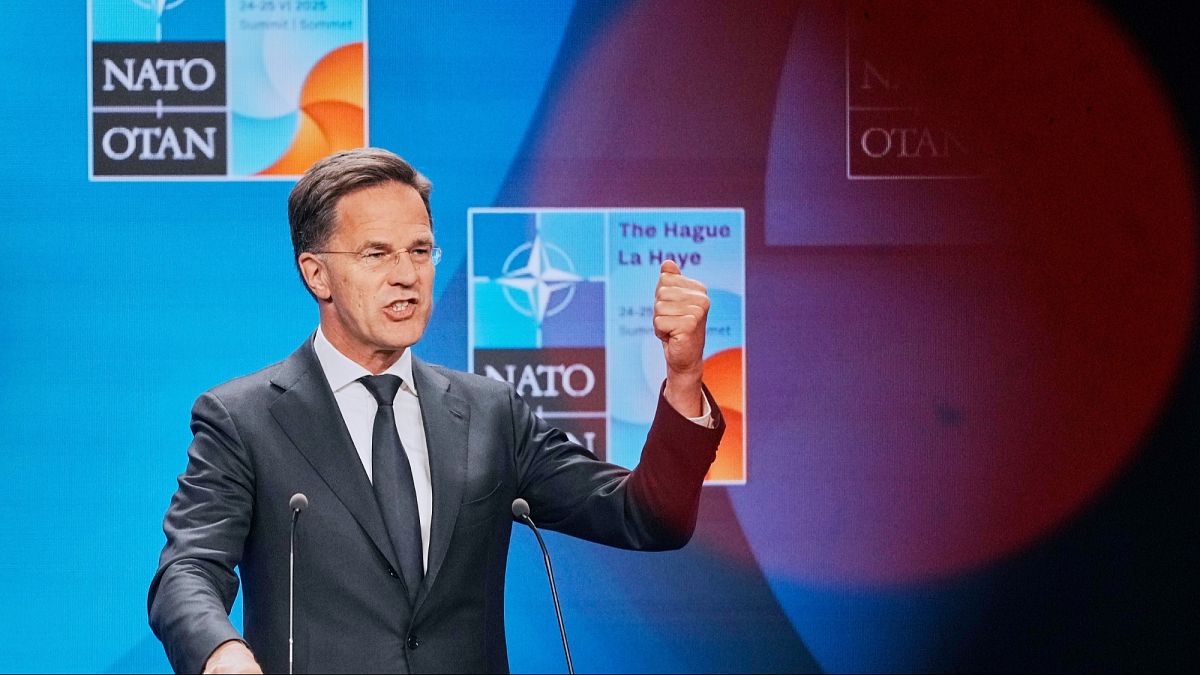NATO’s increased defence spending target will see allies finance a five-fold increase in air defence capabilities, the purchase of “thousands” more tanks and armoured vehicles and “millions of rounds” of artillery ammunition, the alliance’s chief Mark Rutte said on Monday on the eve of a summit in The Hague.
Leaders from the 32 allied countries are expected to sign off on a new defence spending target of 5% of GDP on Wednesday, more than double the 2% level agreed in 2014 at a summit in Wales.
Rutte described the hike as “a quantum leap that is ambitious, historic and fundamental to securing our future” which will lead to a “stronger, fairer, more lethal alliance.”
“Our security environment has changed,” he said, adding that if the alliance doesn’t ramp up spending and production its “deterrence will not be strong enough” in a few years when Russia could have the means to attack another European country.
The target is to be split in two: 3.5% of GDP is to be spent on core military spending (which includes military equipment), while an additional 1.5% will go towards defence-related investments to boost military mobility, cybersecurity, military and civilian cooperation as well as resilience to hybrid threats.
The whole list, which was subject to thorny negotiations among allies with a deal reached last Thursday, will however remain classified.
Allies will need to have reached the target by 2035 at the latest, according to sources close to the negotiations.
Matthew Whitaker, the US ambassador to NATO, emphasised on Wednesday morning that for Washington, “the timeline, quite frankly, is as soon as possible.”
“There’s not an unlimited timeframe here, our adversaries will not wait for us to be ready,” he told reporters. “We would expect meaningful incredible growth from allies in their defence budgets year-on-year.”
A review of where each nation stands in terms of spending and in acquiring the capability it needs is to be held in 2029.
Rutte said the 2029 review and the fact allies will have to submit annual reports is a “big difference from the Welsh pledge” to commit 2% of GDP, which many allies failed to attain until this year following heavy criticism and veiled threats from the new US administration.
He also said that allies, which include Albania, Canada, 23 EU countries, Iceland, Montenegro, North Macedonia, Norway, Turkey, the UK, and the US, will have “flexibility to determine their path for delivering” on their NATO commitments.
This is the same formula he used on Sunday in his letter to Spanish Prime Minister Pedro Sánchez, who had until then rejected the new spending target citing economic difficulties at home.
The summit in The Hague officially starts on Tuesday with meetings between foreign and defence ministers, which Ukrainian officials will join.
Leaders, meanwhile, will gather for a social dinner hosted by the Dutch king, before convening for a single working session on Wednesday morning.
The format, sources with knowledge of the event have said, was drawn up to ensure US President Donald Trump’s attendance and focus on the task and topic at hand.
Similarly, the joint declaration released at the end is expected to be much shorter than the ones that came out of Washington and Vilnius where the two last summits were held.
It should state that Russia continues to pose a long-term threat to the euro-Atlantic security.
Ukraine will be briefly mentioned, with allies set to reaffirm their support to the war-torn country but to not reiterate its “irreversible path” to membership as they did last year.
Rutte sought however to reject any criticism the alliance, under US influence, could be slashing aid to Kyiv, affirming on Monday that NATO’s support to Ukraine is “unwavering and will persist” as shown by the fact allies have upped their aid from the $20 billion (€17.3 billion) previously announced to $35 billion (€30 billion) so far this year.
The crisis unfolding in the Middle East is however expected to cast a shadow over the summit.
“When it comes to NATO’s stance on Iran’s nuclear programme, allies have long agreed that Iran must not develop a nuclear weapon,” Rutte said.
He also stressed that there is a “close connection” between Iran and the alliance’s main threat, Russia, as Tehran “is heavily involved in the fight of Russia against Ukraine” notably through the supply of Shahed kamikaze drones.
